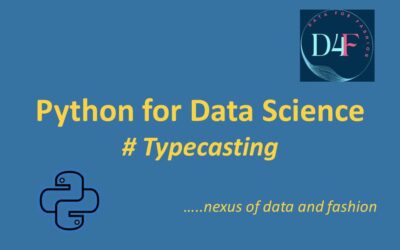Type Casting
- It refers to the process of converting one data type into another.
Types of Type Casting in Python:
Implicit or Auto Type Casting:
- Python automatically converts one data type to another without explicit instructions from the programmer.
- This usually happens when operations between different data types are performed.
- Example
# Autotypecasting :
Sum = 4 + 3.4 + True + 4.0
print(Sum)
Output: 12.4
In this example,
- True means 1
- The result data type is float due to the higher hierarchy
- Python implicitly converts 4(int) ,True(Bool) to a float
Explicit or Forced Type Casting:
The programmer manually converts one data type to another using specific functions.
Commonly used functions include:
int(): Converts a value to an integer.float(): Converts a value to a float.str(): Converts a value to a string.list(): Converts an iterable to a list.tuple(): Converts an iterable to a tuple.set(): Converts an iterable to a set.
Example:
print(int(3.8))
print(int('10'))
print(int(True))
print(float(2))
print(float(True))
print(bool(3))
print(bool(0))
print(list((1,2,3,4,5,6)))
print(tuple([1,2,3,4,5,6]))
print(set((1,2,3,4,5,6)))
Output:
3
10
1
2.0
1.0
True
False
[1, 2, 3, 4, 5, 6]
(1, 2, 3, 4, 5, 6)
{1, 2, 3, 4, 5, 6}
